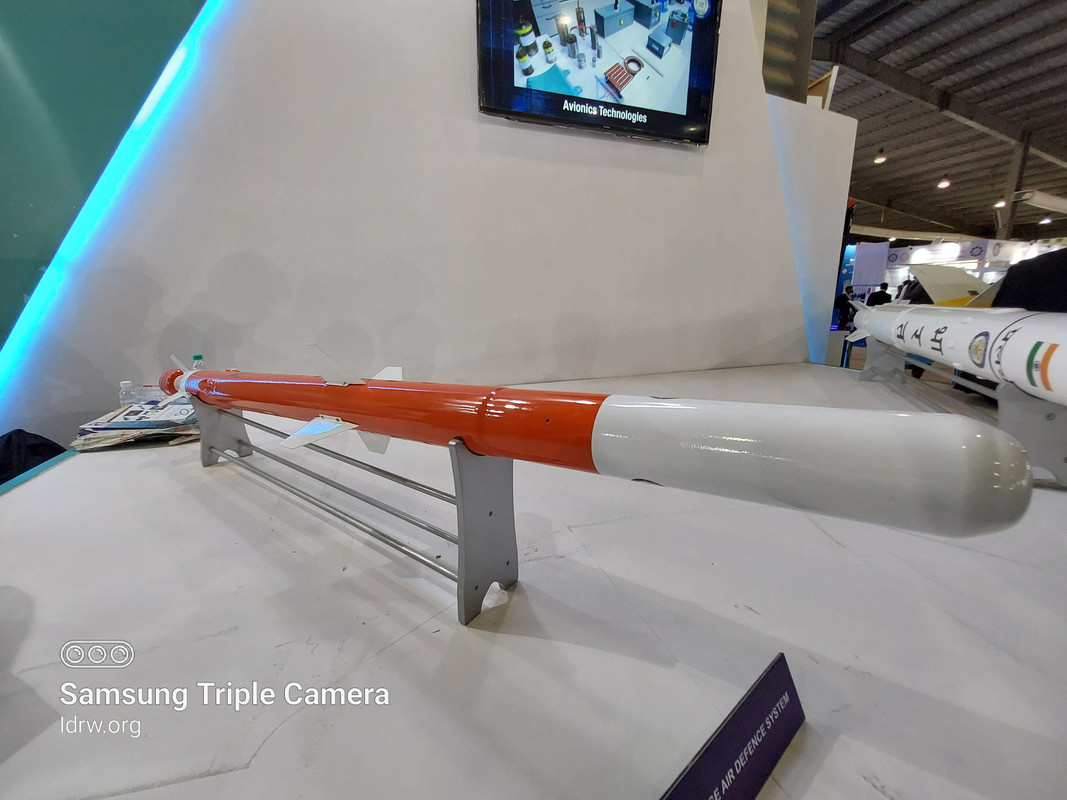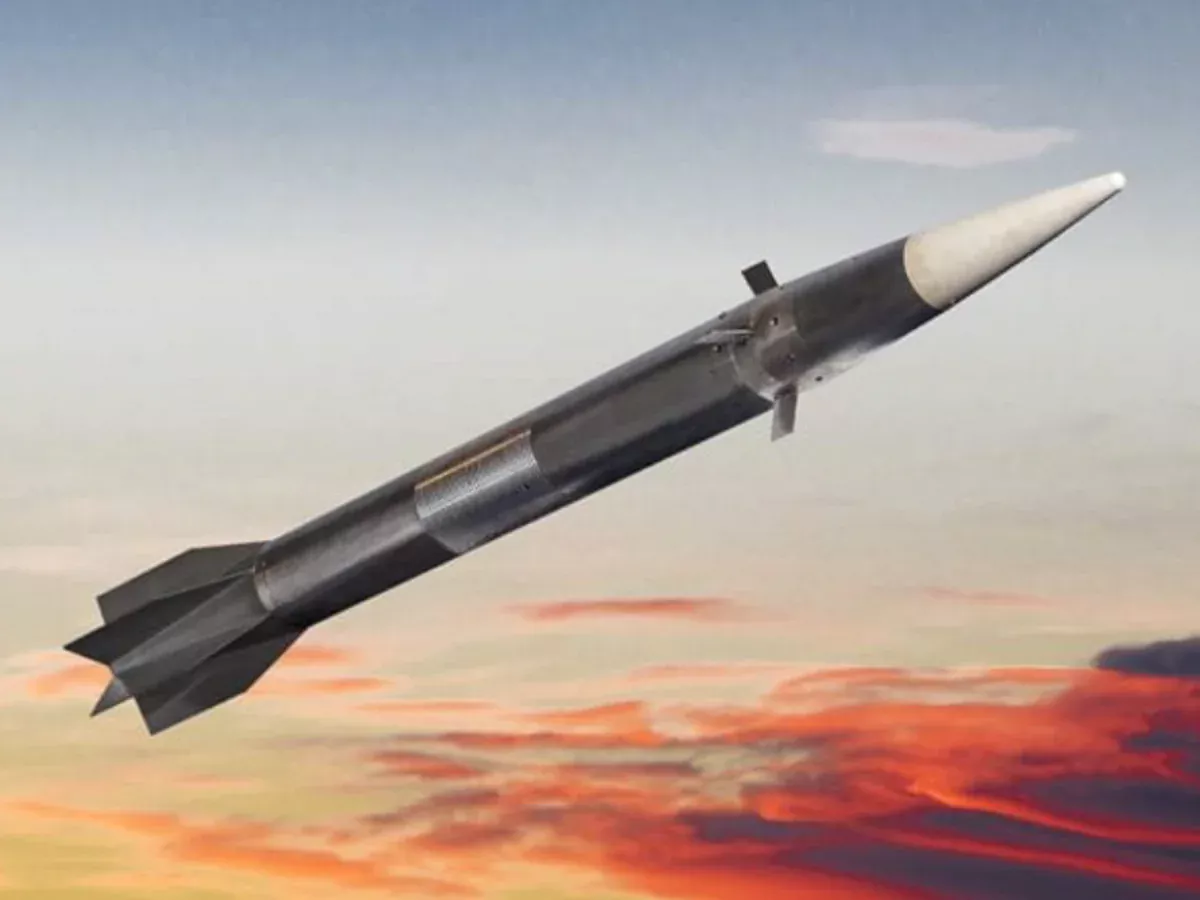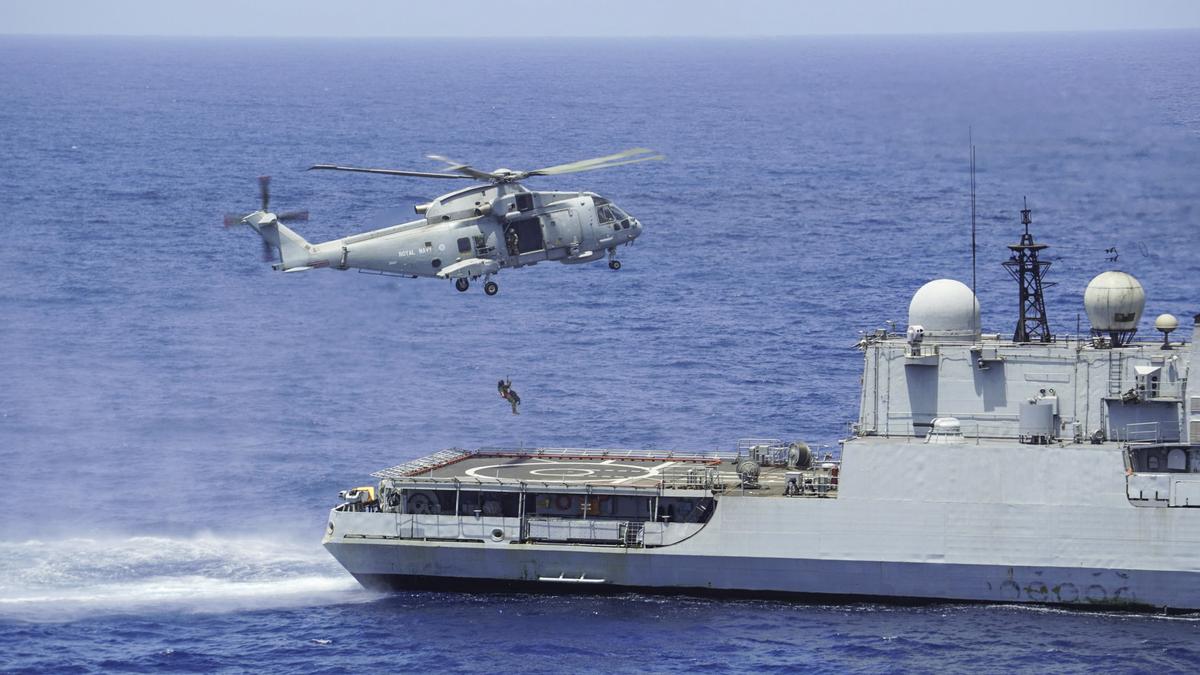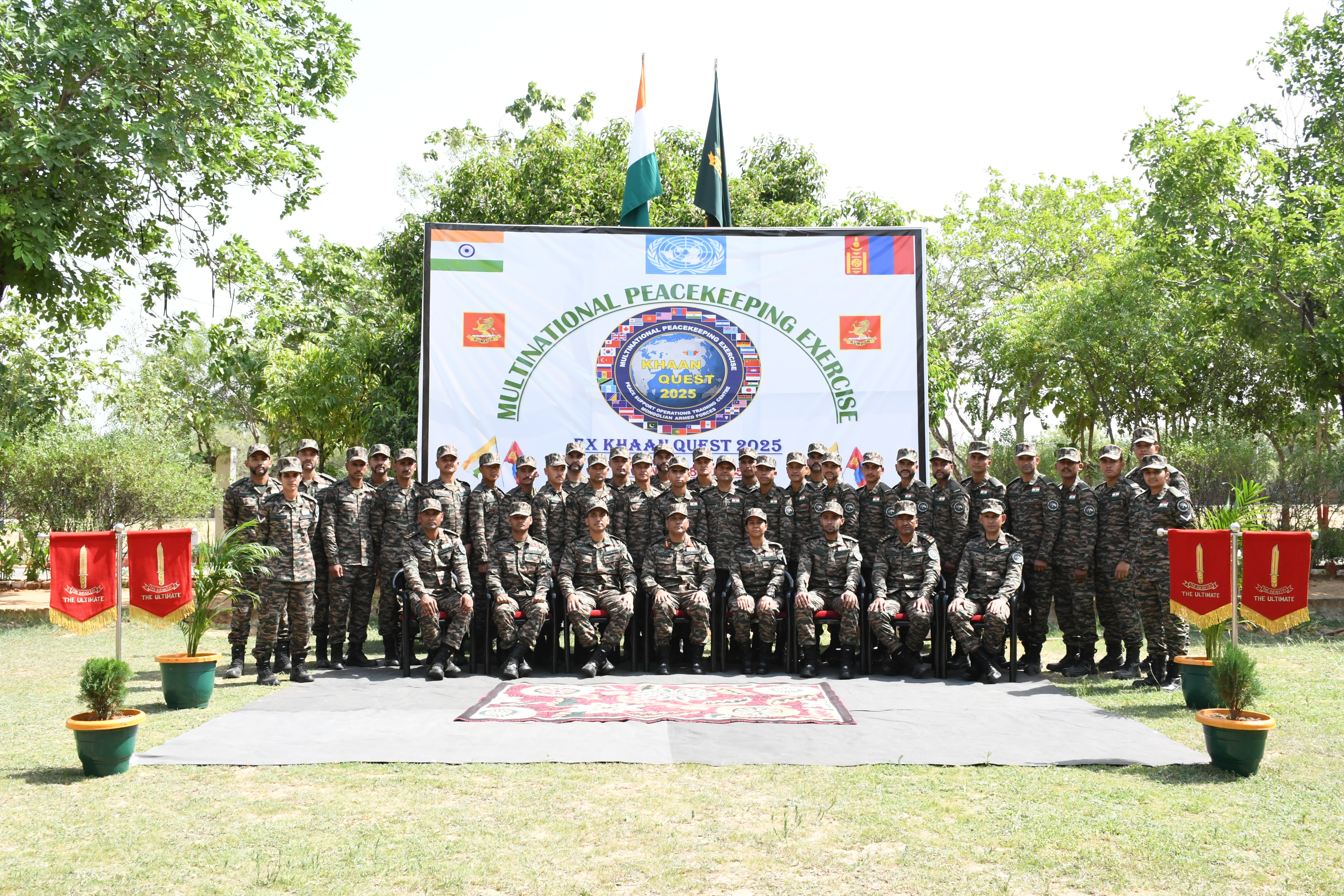SOURCE: RAUNAK KUNDE / NEWS BEAT / IDRW.ORG


The Ministry of Defence (MoD) is reportedly set to examine a significant proposal from Russia involving the export of its advanced Su-57E fifth-generation fighter jet to the Indian Air Force (IAF). According to CNBCTV18, the MoD is likely to consider an off-the-shelf purchase of the Su-57E, a move that could bolster India’s aerial capabilities in response to regional security challenges.
The initial report of this offer came from idrw.org, which highlighted Russia’s proposal to provide the Su-57E with full source code access and an opportunity for local manufacturing at Hindustan Aeronautics Limited’s (HAL) Nashik plant, where the Su-30MKI fighters were previously produced.
Continue readingSOURCE: RAUNAK KUNDE / NEWS BEAT / IDRW.ORG


In a strategic move to counter the growing threat of unmanned aerial vehicles (UAVs), the Indian Air Force (IAF) and Indian Army are set to transform Hindustan Aeronautics Limited’s (HAL) Light Combat Helicopter (LCH) into a dedicated anti-UAV platform by integrating Very Short-Range Air Defence (VSHORAD) systems.
According to information provided to idrw.org both services are keen to procure LCH units equipped with VSHORAD to neutralize long-range Medium-Altitude Long-Endurance (MALE) and High-Altitude Long-Endurance (HALE) UAVs, as well as swarm drones and loitering munitions. This development reflects India’s urgent need to address the proliferation of drones in modern warfare, particularly in light of regional threats from Pakistan and China, and aims to enhance the LCH’s versatility as a multi-role combat platform.
Continue readingSOURCE: RAUNAK KUNDE / NEWS BEAT / IDRW.ORG


Reliance Defence has entered into a strategic cooperation agreement with Germany’s Diehl Defence to produce Vulcano 155mm precision-guided munitions in India. A new manufacturing facility in Ratnagiri, Maharashtra, will drive this initiative, aligning with the Indian government’s Make in India and Atmanirbhar Bharat initiatives. The partnership aims for over 50% indigenous value addition, bolstering India’s defence manufacturing capabilities and supporting its export ambitions.
The Vulcano family of munitions offers enhanced range and precision, making it compatible with a variety of land and naval platforms, including 155mm and 5-inch (127mm) gun systems. Designed to counter air, land, and sea threats, Vulcano leverages cutting-edge technology with a fin-stabilized airframe and canard control for extended range and terminal guidance. Its mechanical interfaces match those of standard ammunition, ensuring seamless integration.
Continue readingSOURCE: AFI


The ongoing development of the Kaveri Engine Derivative (KDE), a critical project under the Gas Turbine Research Establishment (GTRE) aimed at powering India’s indigenous fighter aircraft, continues to underscore the nation’s reliance on imported materials despite significant strides in self-reliance. A recently disclosed material procurement list for the GTRE-KDE project reveals that while domestic suppliers like Mishra Dhatu Nigam Limited (MIDHANI) contribute substantially, key components still depend on foreign sources, posing challenges to achieving full indigenization under the Aatmanirbhar Bharat initiative.
The procurement data, detailing materials for the KDE project, indicates a total requirement of 16,496 kilograms of raw materials, with 4,124 kilograms sourced from imports. Among the critical items, L-605 Round Bars and Sheets & Plates, essential for high-temperature and corrosion-resistant applications, are entirely imported, totaling 1,650 kilograms. Similarly, 130 Tubes, including specialized grades like OD 6, OD 10, OD 12, and OD 12D, are also imported, amounting to 38 kilograms. These imported materials, often high-strength alloys and exotic metals, are vital for the KDE’s performance as a derivative of the Kaveri engine, originally designed to power the Tejas Light Combat Aircraft.
Continue readingSOURCE: AFI


Defense analyst Rohit Vats, posting under the handle @KesariDhwaj on X, sparked widespread discussion with his analysis of India’s Quick Reaction Surface-to-Air Missile (QRSAM) system, describing it as potentially the “world’s most anti-SEAD setup.” His post highlighted the system’s unique configuration, emphasizing its spatially distributed combat groups designed to provide robust air defense coverage over vast areas.
Developed by the Defence Research and Development Organisation (DRDO) in collaboration with Bharat Electronics Limited (BEL) and Bharat Dynamics Limited (BDL), the QRSAM is poised to revolutionize India’s air defense capabilities, particularly for protecting mobile armored columns. With a reported ?30,000 crore order for three regiments in the pipeline, the system’s innovative deployment strategy could redefine battlefield air defense, offering unparalleled resilience against Suppression of Enemy Air Defenses (SEAD) tactics.
Continue readingSOURCE: AFI


In a significant leap toward modernizing its military capabilities, India successfully tested an artificial intelligence-enabled light machine gun (LMG) system on June 9, 2025, in high-altitude terrain. The trials, conducted at an elevation of 14,000 feet, showcased the advanced autonomous features of the Negev LMG, developed by Dehradun-based defense firm BSS Material Ltd. in collaboration with the Indian Army. This cutting-edge weapon system demonstrated its ability to autonomously identify and engage targets in the challenging mountainous environments along India’s rugged borders, marking a pivotal step in enhancing the nation’s defense readiness under the Make in India and Aatmanirbhar Bharat initiatives.
The AI-powered Negev LMG, based on the combat-proven 7.62x51mm NG-7 variant originally developed by Israel Weapon Industries (IWI), integrates a sophisticated multi-sensor AI module designed by BSS Material Ltd. This module enables automatic target detection, friend-foe classification, and real-time engagement, making the system a next-generation battlefield asset. During the high-altitude trials, the weapon maintained stable target acquisition, adaptive fire control, and semi-autonomous surveillance, even in the harsh conditions typical of India’s border regions with China and Pakistan.
Continue readingSOURCE: AFI


In the aftermath of India’s Operation Sindoor, launched on May 7, 2025, in retaliation for the Pahalgam terror attack, the Pakistan Air Force (PAF) is grappling with the consequences of precision strikes on its airbases. Recently surfaced PAF tender documents indicate that at least one Lockheed C-130B Hercules transport aircraft sustained significant damage during the Indian Air Force (IAF) strikes, with repairs now underway to restore its airworthiness.
The documents, while sparse on details, point to damage concentrated on the aircraft’s nose, likely caused by a nearby explosion. This revelation comes as the IAF claims one C-130A/B was destroyed on the ground, with the damaged C-130B possibly being a second aircraft parked nearby. Images published by the Indian Defence Research Wing (idrw.org) showing a massive fire near a PAF C-130 further corroborate the intensity of the strikes, raising questions about the PAF’s operational readiness and the economic toll of repairing critical assets.
Continue readingSOURCE: AFP


Turkey will export 48 of its nationally-produced KAAN fighter jets to Indonesia, Turkish President Recep Tayyip Erdogan announced on Wednesday, marking the first export deal for the advanced aircraft that is still in the development stage.
Erdogan said in an X post that the 48 KAAN fighter jets would be manufactured in Turkey and exported to Indonesia, adding that Indonesia’s “local capabilities” would be integrated into the production process.
Continue readingSOURCE: PTI


The United States has to have a relationship with Pakistan and with India, a top US general has said, noting that it cannot be a “binary switch” where Washington cannot have ties with Islamabad if it has relations with New Delhi.
US Army General Michael Kurilla, Commander of US Central Command (CENTCOM), made the comments during a testimony before the US House Armed Services Committee on Tuesday. “We have to have a relationship with Pakistan and with India. I do not believe it is a binary switch that we can’t have one with Pakistan if we have a relationship with India,” Kurilla said. “We should look at the merits of the relationship for the positives that it has.”
Continue readingSOURCE: IANS


Garden Reach Shipbuilders and Engineers (GRSE) Ltd, on Wednesday, signed a contract for the construction of two Coastal Research Vessels (CRVs) for the Geological Survey of India (GSI). The contract for the two Coastal Research Vessels (CRVs) was signed by Shantanu Bose, Director (Shipbuilding), GRSE and Dr N M Shareef, Deputy Director General and HoD, Marine and Coastal Survey Division, GSI, in the presence of Asit Saha, Director General, GSI, and other senior officials from GRSE and GSI.
The signing of this contract highlights GRSE’s expertise in the field of research platforms. The shipyard is currently building an Ocean Research Vessel (ORV) for the National Centre for Polar and Ocean Research (NCPOR), under the Ministry of Earth Sciences, Government of India, and an Acoustic Research Ship (ARS) for the Naval Physical and Oceanographic Laboratory (NPOL), an establishment under the Defence Research and Development Organisation (DRDO).
Continue readingSOURCE: Indian Air Force


Exercise Tiger Claw 2025, the first ever independent Special Forces exercise, between IAF and USAF, concluded at the Garud Regimental Training Center, yesterday. Conducted at various locations in North India, from 26 May to 10 Jun 25, the exercise objectives included expanding partnership, mutual exchange of best practices in Special Operations, and joint training between the two Air Forces to develop interoperability.
There are institutional exchanges and training programmes between the armed forces of the two countries at various levels. As far as the two air forces are concerned, they also conduct several air exercises, including the bilateral Cope India, and participate in other multinational drills such as Tarang Shakti and Red Flag.
Continue readingSOURCE: PTI
)

The Chinese Embassy in India has expressed gratitude to the Indian Navy and the Coast Guard for the “prompt and professional rescue” operation following a blaze on board a cargo vessel off the Kerala coast.
Of the 22 crew members of Singapore-flagged MV Wan Hai 503 that caught fire following a container explosion on Monday, 18 were rescued by the Navy, the Indian Coast Guard (ICG) and other agencies.
Continue readingSOURCE: IANS


In a powerful display of maritime strength, the Indian Navy and the United Kingdom’s Royal Navy conducted a high-intensity Passage Exercise (PASSEX) in the North Arabian Sea. The crucial naval exercise, conducted on June 9 and 10, between the two geopolitical giants witnessed the participation of Indian Navy’s stealth frigate INS Tabar, a conventional submarine, and the long-range maritime reconnaissance aircraft P-8I.
From the UK’s side, the exercise witnessed the deployment of UK Carrier Strike Group, comprising HMS Prince of Wales and HMS Richmond.
Continue readingSOURCE: PIB


The Indian Army contingent reached Ulaanbaatar, Mongolia today for the Multinational Military Exercise KHAAN QUEST, which is scheduled to be conducted from 14th to 28th June 2025. The exercise will bring together military forces from around the world to collaborate and enhance their peacekeeping capabilities. Last edition of Exercise KHAAN QUEST was conducted in Mongolia from 27th July to 9th August 2024.
The exercise first started as a bilateral event between USA and Mongolian Armed Forces in the year 2003. Subsequently, from the year 2006 onwards the exercise graduated to a Multinational Peacekeeping Exercise with current year being the 22nd iteration.
Continue readingSOURCE: PTI


Indian Coast Guard ships on Wednesday continued to battle thick smoke after a massive blaze broke out aboard the Singapore-flagged container vessel MV WAN HAI 503 off the Kerala coast. Thick plumes of smoke continue to billow from the ship, complicating efforts to douse the flames.According to the Indian Coast Guard, as of 5:00 PM on Tuesday, the flames on the container ship were reduced, as thick smoke continued to emanate.
It said attempts were being made to control the vessel fire that injured several crew members. Of the 22 crew members, 18 were rescued by the Indian Navy, while four are still missing.”Indian Coast Guard ships continue to fight the fire and attempt to bring the inferno on the container ship MV WAN HAI 503 under control off Kerala coast. Visible flames have reduced, and thick smoke continues to emanate as of 1700 hours today,” the Indian Coast Guard said.
Continue reading